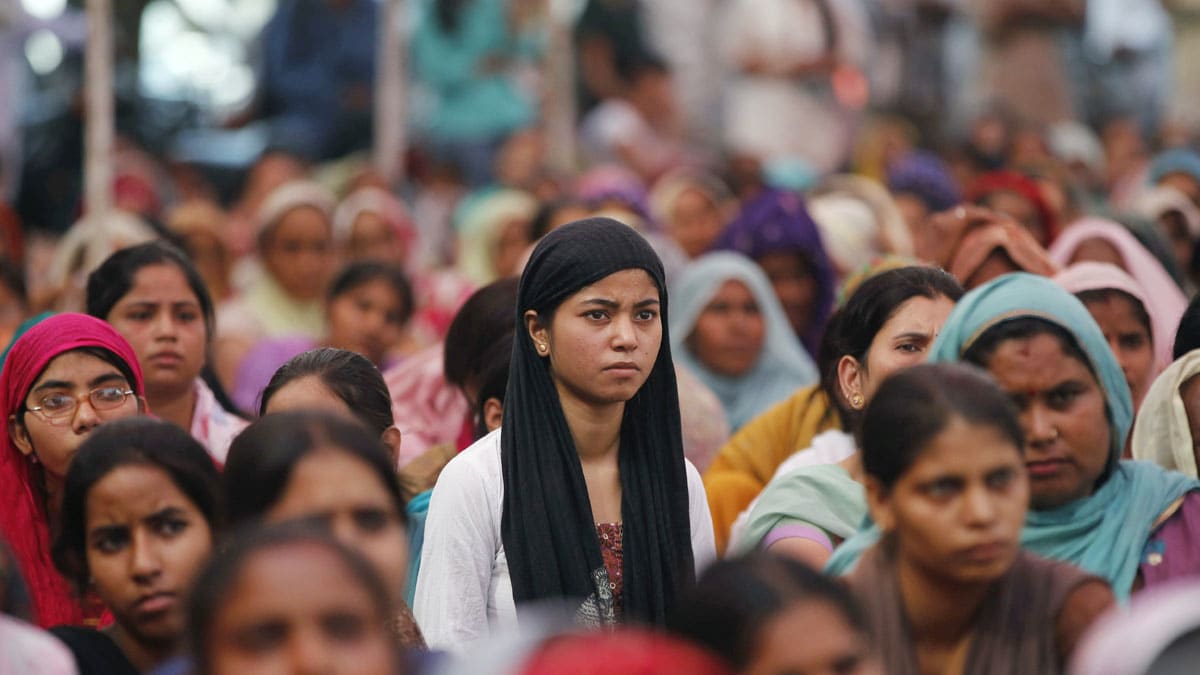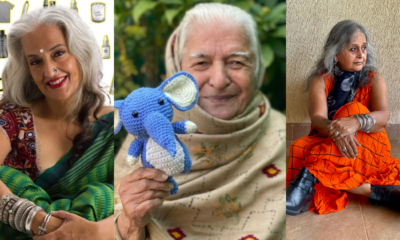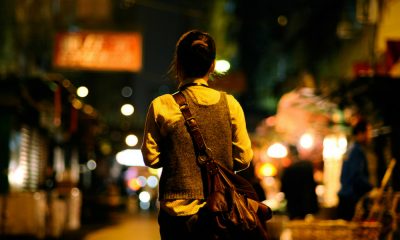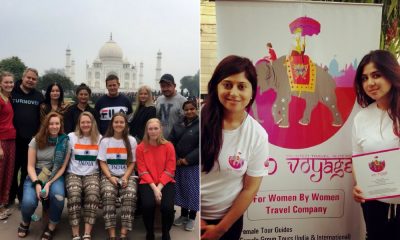In Focus
Why India Is ‘Not’ The Most Dangerous Country In the World For Women

India is certainly not a heaven for women but calling it the worst in the world, that too based on survey by a foreign agency is slightly melodramatic. It is an intentional attempt to malign the country’s image and spread misinformation around the world
Text Credits: Shibul Pavithran
A report by Thomson Reuters Foundation would have us believe that India is the world’s most dangerous country for women. Yes, women in India are unsafe – so unsafe that stepping out of the house after sundown in most parts of the country is considered suicidal. Is this really the case? The amount of girls’s only train compartments, girl’s only party scenes (ladies night party) and the opportunity in government sector jobs has only been increasing, since I have been hearing from last 8 or 9 years, I really don’t think so that India is fairing the worst in women’s safety. The number of girls hanging out at night time has considerably increased from the last decade. From working at BPO’s, corporates, airports, and hospitals, you can find women in most of the public spaces in urban India, irrespective of the time.

Source: Youtube
But there are some countries in this world where women are not permitted to move freely even during the day. And that restriction, mind you, has been enforced by the law of the land. This article is not an attempt to establish “my opinions are better than yours”. The piece is only trying to argue that Thomson Reuters ranking India as the world’s most unsafe country in the world is unfair to both India and women in countries where they are fighting for the bare minimum right to survive.
India has topped the list of the most dangerous nations globally for women, due to the widespread sexual , regressive cultural practices and human trafficking prevalent in our country, according to a poll conducted by the Thomson Reuters Foundation. In all, 759 experts in women’s issues studied the survey, of which came 548 responses. The survey looked at 193 United Nations member nations.
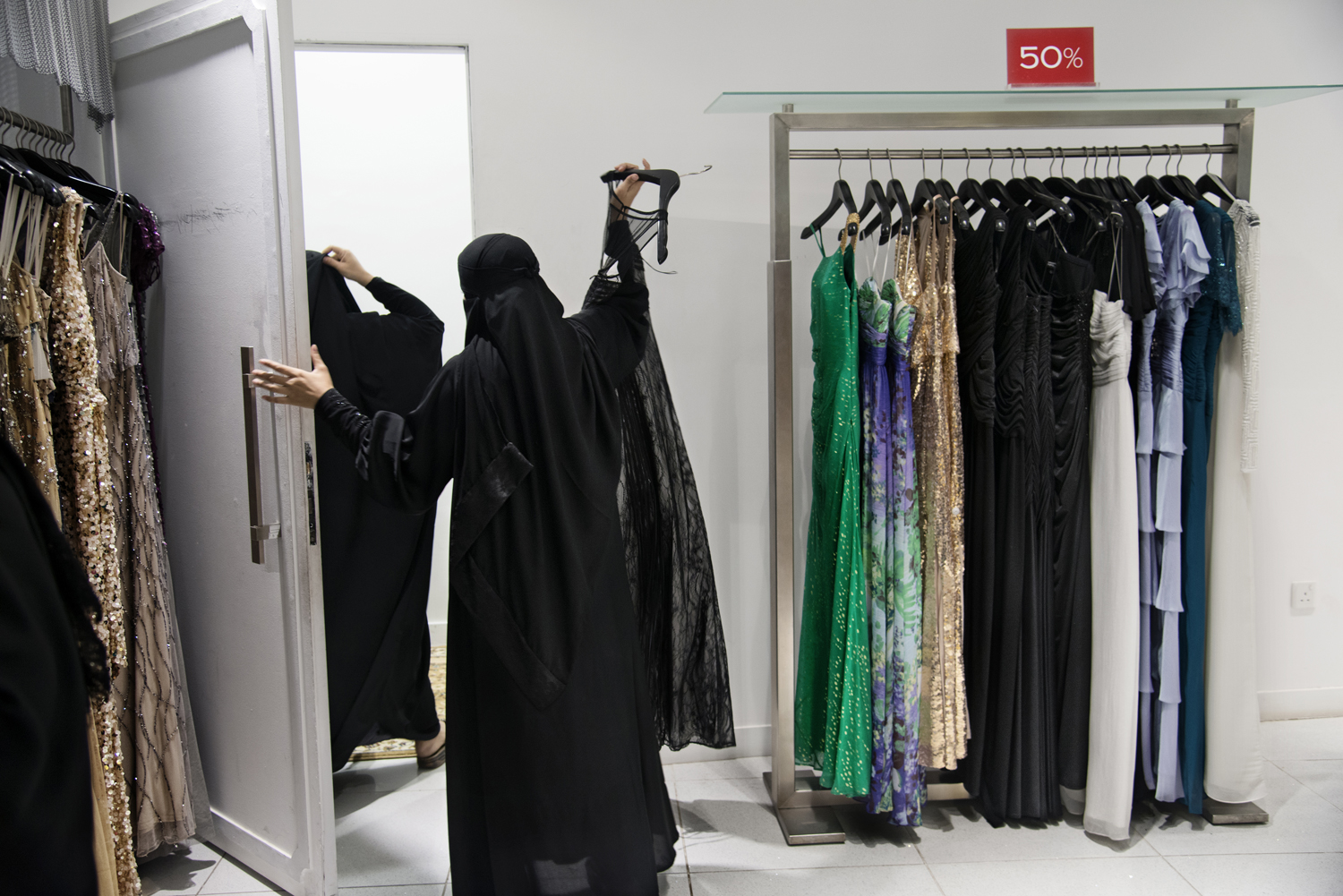
Source: pulitzercenter.org
In Saudi Arabia, women cannot try clothes while shopping. The mere thought of a disrobed woman behind a dressing room is apparently too much for men to handle. And there is whole list of things that you never even think of doing if you are women from Saudi.
In Iran, certain universities ban female students from studying specific subjects, usually those concerning engineering and technology, thinking its too masculine to study professional subjects.
In Mississippi in the US, a rapist can claim parental right over a child. Did you know that?
In Israel, a woman needs her husband’s permission to get a divorce. And the misogynistic list just goes on and on. On what basis has India been ranked the worst for women, lets examine them:

Source: Vanillanews.com
Sexual Misconduct:
Indian government data, which has formed the basis for most respondents to rank India highest on the index shows that four cases of rape being reported every hour In India. The way these figures have been reported here has made it look like there has been a sudden inrcease in cases of sexual assaults. But what has actually happened is that more cases are being reported now. With provisions of zero FIR and online FIR, which allows a FIR to be filed in any police station, irrespective of the place of an incident/jurisdiction, and growing outrage against victims being turned away from police stations, more rape survivors have come forth to report sexual assault.
In India itself, more cases are reported from Delhi because, in the present case of media attention, it is very difficult for police officers to turn away victims without lodging their complaints. Which does not mean that Delhi is actually the most unsafe city and a nearby town such as, say, Meerut or Agra, is a women’s paradise.
In Saudi Arabia, there is no penal code and no written law which specifically criminalises rape or prescribes its punishment. So, if you can design the mechanism in a way that no one can come out and register a case, you can live happily in the comfort of the fallacy that it never happened.
Source: The Daily Beast
Human Rights Watch, which has investigated a similar situation, has concluded in its reports that the rape victim is often punished for speaking out against the crime, which is not the case in India. Hence I can firmly say that India is certainly not the worst in the world when it comes to women’s safety.
Regressive Cultural Practices:
The most powerful tool used to ensure domination over women has been the ‘culture card’ in India. They have long been confined to the four walls of a house, then abused mentally and physically even behind those walls.
But have women elsewhere been having a party?
While female genital mutilation (FGM) in India is largely restricted to the Muslim Bohra community, it is pretty blatant and rampant across many African countries.

Source: PeepingMoon.com
Periods are now being openly discussed in India, with the topic, once taboo, even turning into the theme for a blockbuster movie in this country. The ease with which these issues can now be discussed in this country did not seem possible a few decades ago. Women in India have battled for their right to enter the Haji Ali sanctum and Sabarimala at a time when their male counterparts were fighting over the right to be allowed to do female foeticide, even in cases where it poses a risk to women’s life.
Try pulling off a ‘Padman challenge’ in Saudi Arabia or Iran, and soon you would start missing your Indian identity, for obvious reasons.
Human Trafficking
Trafficking women and children for sexual exploitation is the fastest growing criminal network in the world. Women and girls account for seven in 10 victims of an industry estimated to affect 40 million people worldwide and generate illegal annual profits of $150 billion for traffickers, says the United Nations and the rights group Walk Free Foundation. Women and girls in India, the Thomson Reuters study tells us, face the biggest threat from traffickers because they are still widely considered to be sexual objects and second-class citizens. Which country in the world has accorded women the status of first-class citizens is a troubling question that hasn’t been answered here though.

Source: Milindo Taid
Thomson Reuters reached out to say that while the problem is rampant across the globe, those from southeast Asia, and especially from India, are the most vulnerable because girls are seen as a ‘burden’ on families, ‘inferior’ to boys. That is enough to explain why Thomson Reuters has jumped the gun in declaring India the worst country in the world for women. Yes, women in India are vulnerable. Their fight for a life of dignity is a daily battle – but progress is being made. However, there are parts of this world where women don’t even know what that means.
Thomson Reuters needs a deeper, more detailed and far more sensitive study to figure that out.
Let us know what you guys think, in the comment section below.
Cover Story
Unraveling the Mystique: Leap Day Myths from Around the Globe

Leap day, that enigmatic extra day added to our calendars every four years, has long been shrouded in mystery and folklore. Across cultures and continents, various myths and beliefs have emerged surrounding this rare occurrence. Let’s embark on a journey to explore some of the fascinating leap day myths from around the world.
The Irish Tradition of Women Proposing:

One of the most well-known leap day traditions originates from Ireland. According to Irish folklore, St. Bridget struck a deal with St. Patrick, allowing women to propose to men every leap day. It was believed that this reversal of traditional gender roles would bring good luck and fortune to the couple. While this custom may seem antiquated in modern times, it serves as a reminder of the evolving nature of societal norms and the persistence of age-old customs.
Greek Superstitions:

In Greece, leap years are often associated with superstitions and caution. It is believed that any actions taken during a leap year, especially major decisions like marriage or starting a business, may be fraught with misfortune. Consequently, many Greeks prefer to postpone significant endeavors until the following year, avoiding the perceived risks associated with leap years. This superstition highlights the deeply ingrained cultural beliefs surrounding auspicious timing and the fear of tempting fate.
Leap Day Babies:

For individuals born on February 29th, known as leap day babies or leaplings, their birthdays hold a special significance that transcends conventional calendar dates. In various cultures, leap day babies are said to possess unique qualities or destinies. Some believe they are endowed with good luck, while others consider them to be blessed with eternal youth. Regardless of the superstitions, leap day babies serve as a reminder of the extraordinary nature of time and the quirks of our calendar system.
The Perplexing Aztec Calendar:

Among the ancient civilizations of Mesoamerica, such as the Aztecs, leap years held particular significance within their complex calendrical systems. The Aztec calendar, known as the Xiuhpohualli, consisted of 365 days divided into 18 months, with an additional five “nameless” days at the end of the year. To reconcile the solar year with their calendar, the Aztecs periodically inserted leap days, known as Nemontemi, to ensure alignment with the agricultural and celestial cycles. These leap days were associated with rituals and ceremonies, underscoring the interconnectedness of time, culture, and cosmology.
Lunar Leap Day in China:

In traditional Chinese culture, leap years are intricately linked to the lunar calendar and the celebration of the Chinese New Year. Known as a “leap lunar month,” this phenomenon occurs approximately every three years within the Chinese calendar cycle. During a leap lunar month, an extra lunar month is added to maintain synchronization with the solar year. This adjustment ensures that traditional festivities, such as the Lunar New Year, occur at the appropriate seasonal intervals, preserving centuries-old customs and cultural heritage.
Leap day serves as a captivating intersection of timekeeping, tradition, and folklore, weaving a tapestry of myths and beliefs from diverse cultures around the world. Whether it’s the Irish tradition of women proposing, Greek superstitions, the enigmatic Aztec calendar, or the intricacies of the Chinese lunar cycle, leap day continues to captivate our imagination and inspire wonder. As we embrace the fleeting nature of this extra day, let us reflect on the rich tapestry of human ingenuity and the enduring legacy of our collective beliefs and customs.
Beauty
Jennifer Lopez’s Daring Fashion Choice: A Wetsuit-Inspired Gown Steals the Spotlight on the Red Carpet

When it comes to making a statement on the red carpet, Jennifer Lopez is no stranger to turning heads. The multi-talented star recently attended the premiere of “The Flash” to support her husband, Ben Affleck, who reprises his role as Batman. While their public display of affection grabbed attention, it was their coordinated and eye-catching outfits that truly stole the show. Lending her style expertise, J Lo stepped out in a bold and unconventional gown inspired by wetsuit designs, proving that she continues to push the boundaries of fashion.

Styled by the talented duo Rob Zangardi and Mariel Haen, her gown was a striking creation from Gucci’s resort 2023 collection, fresh off the runways of Seoul. The ensemble featured a sleek black zip-up bodice reminiscent of scuba suits, adding a unique and unexpected element to the traditional red carpet attire. Contrasting the sporty top, a flowing peach satin maxi skirt with a long train exuded elegance and femininity.
While the gown was originally presented on the runway with a fully zipped-up collar, J Lo made a daring choice to unzip hers just above the belly button. This modification transformed the look into a more revealing and sensual ensemble, showcasing the star’s confidence and willingness to embrace risks. With every step, the gown accentuated her enviable figure, commanding attention and setting a new standard for red carpet fashion.
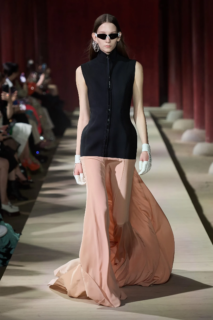
To complete her show-stopping look, Jennifer Lopez made careful choices when it came to accessories. She opted for a pair of white leather platform pumps from Gucci, elevating her height and adding a touch of sophistication. The choice of accessories further emphasized the fusion of sporty and elegant elements in her outfit. Complementing the gown’s black bodice, she adorned herself with exquisite jewelry pieces from Daniela Villegas and Le Vian, adding a touch of luxury and sparkle. Carrying a sleek black leather clutch bag by Kurt Geiger, J Lo effortlessly showcased her ability to curate every aspect of her ensemble.
One cannot overlook the sartorial synchrony between Jennifer Lopez and her husband, Ben Affleck. Affleck, known for his impeccable red carpet style, consistently mirrors the overall vibe of J Lo’s look. For the premiere, he opted for an all-black ensemble, comprising a sleek black suit, a matching black shirt, and polished black leather dress shoes. The couple’s synchronized fashion choices not only showcase their undeniable chemistry but also demonstrate their commitment to presenting a cohesive and visually appealing appearance together.
Jennifer Lopez continues to push fashion boundaries and surprise the world with her red carpet choices. Her wetsuit-inspired gown at “The Flash” premiere exemplifies her fearless approach to style. By incorporating sporty elements into a sophisticated ensemble, she proves that fashion can be both daring and elegant. Alongside her partner Ben Affleck, the power couple’s synchronized looks create an awe-inspiring visual spectacle, solidifying their status as fashion icons. J Lo’s ability to effortlessly command attention and make fashion statements ensures that she remains an influential force in the world of celebrity style.
Fashion
Unveiling the Mystery : The Rise of ‘Quiet Luxury’ – The Viral and Ultra-Expensive Fashion Trend Followed by Billionaires

In the world of fashion, where flamboyance and opulence often take center stage, a new trend has quietly emerged, captivating the attention of celebrities, billionaires, and fashion enthusiasts alike. Known as “Quiet Luxury,” this viral and ultra-expensive fashion trend is causing waves in the industry, challenging the conventional notions of wealth display and style.
While many high-end luxury brands are known for their ostentatious and eye-catching designs, ‘Quiet Luxury’ takes a different approach. It revolves around the concept of dressing in understated, label-less clothing that exudes an aura of sophistication and exclusivity, despite its seemingly ordinary appearance. This trend has gained significant traction over the past few months, with influential figures embracing its allure.
So, what exactly is ‘Quiet Luxury’? At its core, it is a form of subtle wealth display, where the wealthiest individuals meticulously curate their attire with understated tones, simple cuts, and an absence of prominent logos. These seemingly unassuming garments, however, come with exorbitant price tags, often costing a small fortune.

One notable incident that brought ‘Quiet Luxury’ into the spotlight was Gwyneth Paltrow’s appearance in court, clad in an impeccably tailored but discreet pantsuit. This choice perfectly exemplified the essence of ‘Quiet Luxury,’ showcasing the ability to convey elegance and affluence without resorting to overt displays of wealth.
The appeal of ‘Quiet Luxury’ lies in its ability to provide billionaires with a paradoxical blend of ordinariness and exclusivity. By adorning themselves in seemingly commonplace clothing, these individuals are able to blend in with the masses while exuding an air of refinement and extravagance. The garments they choose may appear unassuming to the untrained eye, but their true worth is hidden in the finest craftsmanship, luxurious materials, and meticulous attention to detail.
One prime example of this trend can be found in the wardrobe of Facebook founder Mark Zuckerberg, often seen sporting plain white or grey t-shirts that carry a hefty price tag. Such minimalistic pieces become the epitome of ‘Quiet Luxury,’ encapsulating the allure of hidden opulence within simplicity.
While ‘Quiet Luxury’ is not an entirely novel concept, its popularity has surged in recent times. The trend offers a safe and non-risky approach to fashion, favoring monochrome palettes, classic cuts, and timeless styles that are unlikely to fade away. This makes ‘Quiet Luxury’ an attractive option for those who seek to present themselves as both presentable and affluent, while also ensuring their fashion choices remain perpetually relevant.

In an era where ostentatious displays of wealth often dominate the fashion landscape, ‘Quiet Luxury’ stands as a captivating alternative, enticing the ultra-rich with its subtle allure. By embracing this trend, billionaires and celebrities alike have found a way to project their affluence with grace and sophistication, making a powerful statement without uttering a word.
As the influence of ‘Quiet Luxury’ continues to grow, we can only speculate on how this trend will shape the fashion industry in the coming years. Perhaps it will inspire a broader shift towards understated elegance and timeless style, encouraging individuals to redefine what it truly means to be fashionably wealthy.
-
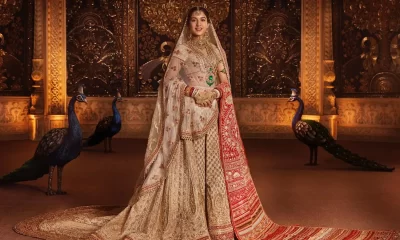
 Style11 months ago
Style11 months agoBridal Guide : Best Looks of Radhika Merchant Ambani
-
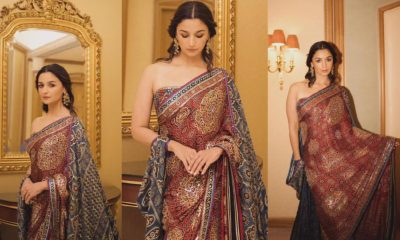
 Fashion1 year ago
Fashion1 year agoMost Discussed Ajrakh Saree of Alia Bhatt
-

 Entertainment1 year ago
Entertainment1 year agoBridal Bliss : All Bridal Looks of Swasika Vijay
-

 Movies1 year ago
Movies1 year agoA Nostalgic Journey Through Love &Cinema : Best Bollywood Romantic 90s Movies
-

 AD8 months ago
AD8 months agoPopular Curtain Fabrics to Consider for Your Home
-
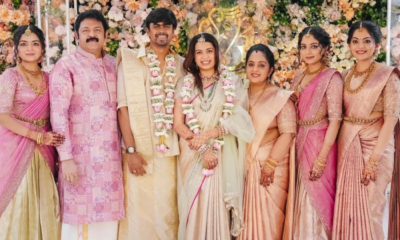
 Events9 months ago
Events9 months agoBest of Fashion Looks : Diya Krishna Wedding
-

 Events9 months ago
Events9 months agoThe L’Oréal Paris Show at Paris Fashion Week 2024
-

 news9 months ago
news9 months agoLaapataa Ladies: Kiran Rao’s Social Satire Becomes India’s Official Entry for the 2025 Oscars

